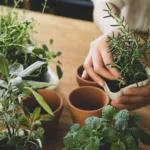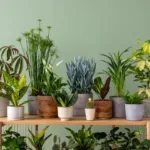The best way to keep your houseplants thriving is with a dedicated indoor plant food. Here, we’ve shared our reviews of the best indoor plant fertilisers in the UK based on our own extensive research and testing.
Brand: Baby Bio
Price: £
Size: 175ml
Form: Liquid
Intended for: Indoor use
Ingredients: Nitrogen, phosphorous, potassium
When to use: Year-round
Application frequency: Every 2 weeks/every time you water
Brand: Baby Bio
Price: £
Size: 175ml
Form: Liquid
Intended for: Indoor use
Ingredients: Nitrogen, phosphorous, potassium
When to use: Year-round
Application frequency: Every 2 weeks/every time you water
Brand: MARPHYL
Price: ££
Size: 500ml
Form: Liquid
Intended for: Indoor & outdoor use
Ingredients: Nitrogen, phosphorous, potassium, calcium, iron, magnesium
When to use: Year-round
Application frequency: Every 2 week
Brand: Baby Bio
Price: £
Size: 175ml
Form: Liquid
Intended for: Indoor use
Ingredients: Nitrogen, phosphorous, potassium
When to use: April-September
Application frequency: Every 1 month
Brand: Jobes
Price: £
Size: 250ml
Form: Liquid
Intended for: Indoor use
Ingredients: Nitrogen, phosphorous, potassium
When to use: Year-round
Application frequency: Every 2-3 months
Brand: Phostrogen
Price: £-££
Size: 400g-2kg
Form: Granules
Intended for: Indoor & outdoor use
Ingredients: Nitrogen, phosphorous, potassium, trace elements
When to use: Year-round
Application frequency: Every 1-2 weeks
Table of Contents
 Best Indoor Plant Fertilisers UK: 2025
Best Indoor Plant Fertilisers UK: 2025
Best Overall: Baby Bio 5878844 Houseplant Food
Best Organic: Baby Bio Organic Houseplant Food
Best Multipurpose: MARPHYL Plant Food Fertiliser
Best For Cacti & Succulents: Baby Bio Cactus Food Plant Feed For Cactus And Succulent Plants
Best Slow-Release Fertiliser: Jobes Houseplant Food Spikes
Best Granular Feed: Phostrogen 84413550 All Purpose Plant Food
📊 Comparison Chart of Fertilisers For Indoor Plants
| Product | Price | Size | Form | Intended for | Ingredients | When to use | Application frequency |
|---|---|---|---|---|---|---|---|
| Baby Bio 5878844 Houseplant Food | £ | 175ml | Liquid | Indoor use | Nitrogen, phosphorous, potassium | Year-round | Every 2 weeks/every time you water |
| Baby Bio Organic Houseplant Food | £ | 175ml | Liquid | Indoor use | Nitrogen, phosphorous, potassium | Year-round | Every 2 weeks/every time you water |
| MARPHYL Plant Food Fertiliser | ££ | 500ml | Liquid | Indoor & outdoor use | Nitrogen, phosphorous, potassium, calcium, iron, magnesium | Year-round | Every 2 weeks |
| Baby Bio Cactus Food Plant Feed | £ | 175ml | Liquid | Indoor use | Nitrogen, phosphorous, potassium | April-September | Every 1 month |
| Jobes Houseplant Food Spikes | £ | 250ml | Liquid | Indoor use | Nitrogen, phosphorous, potassium | Year-round | Every 2-3 months |
| Phostrogen 84413550 All Purpose Plant Food | £-££ | 400g-2kg | Granules | Indoor & outdoor use | Nitrogen, phosphorous, potassium, trace elements | Year-round | Every 1-2 weeks |
⭐ Reviews – Best Indoor Plant Fertilisers of 2025
In our opinion, the best overall fertiliser for indoor plants is the Baby Bio 5878844 Houseplant Food. Of all the houseplant fertilisers we tested, this produced the fastest, most noticeable, and most consistent results, and at an unbeatable value for money – it cost less than £3 when we got it for testing. Our indoor plants looked greener and healthier, and most were growing new shoots and leaves, within just a few weeks.
Quick Specs:
Brand: Baby Bio
Price: £
Size: 175ml
Form: Liquid
Intended for: Indoor use
Ingredients: Nitrogen, phosphorous, potassium
When to use: Year-round
Application frequency: Every 2 weeks/every time you water
Best For:
Anyone who wants to invest in the very best affordable indoor plant fertiliser to bring their wilting or struggling houseplants back to life, or simply give their plants a dose of nutrients for healthy growth.
What Customers Think:
The Baby Bio 5878844 Houseplant Food was had the most, and the best, reviews of any indoor houseplant fertiliser that we found, more than 16,000 reviews and 4.6-star average rating. Customers said that the feed was “amazing product” “the best plant food”. Multiple reviewers commented that the fertiliser had helped bring their dying houseplants back to life.
What We Like:
The Baby Bio 5878844 Houseplant Food was the best indoor plant food we used for supporting green, healthy plant growth. It delivers a dose of nitrogen, potassium, and phosphorous, which are a winning formula for indoor plants, benefitting their overall development and resilience. We think a potent combination of these nutrients was especially beneficial to our houseplants because the nutrients in their soil were finite – which is why they were looking a bit sad, dull, and droopy before we revived them with the Baby Bio fertiliser.
The smaller 175ml bottle was a good size for us since it was easy to stash inside a cupboard without having to make substantial room. A little goes a long way, though, so if you only have a handful of plants, one bottle should last you months. Value for money is definitely there with this fertiliser.
We found it easy to use the fertiliser following the instructions on the bottle. There are different recommendations based on your watering frequency, and we started on the lower end, using 5 drops of the liquid in half a litre of water. This worked well for us.
What We Don’t Like:
We found it difficult to open the bottle lid on our first use. Thankfully, we read a customer recommendation online (place the bottle upside down in hot or boiling water) which did the trick.
Baby Bio excels in its indoor plant food offerings, and the Baby Bio Organic Houseplant Food is our top recommendation for the best organic indoor plant fertiliser. As the name suggests, it’s made from organic ingredients, so it’s best suited to houseplant parents who prefer organic gardening practices. Despite its different formula, we found that this plant feed delivered very similar results – all our houseplants reacted really well to the solution and were looking greener, healthier, and perkier after just a few waters.
Quick Specs:
Brand: Baby Bio
Price: £
Size: 175ml
Form: Liquid
Intended for: Indoor use
Ingredients: Nitrogen, phosphorous, potassium
When to use: Year-round
Application frequency: Every 2 weeks/every time you water
Best For:
People who prefer to use organic fertilisers but still want a quality product that makes a noticeable difference to plant growth.
What Customers Think:
The Baby Bio Organic Houseplant Food has the same average Amazon star rating as the manufacturer’s non-organic formula: 4.6 out of 5. Customers called the feed a “great review for houseplants” and “nutritious and long lasting”. Some of the houseplants that customers successfully used this formula on include indoor tomato and chilli plants, orchids, and pin-stripe calathea.
What We Like:
The fact that the Baby Bio Organic Houseplant Food is made from organic ingredients is the big selling point for us. It delivered all the nutrients our plants needed to thrive, including nitrogen, phosphorus, and potassium, without the harmful chemicals. We also enjoyed the addition of seaweed, which has been proven to support better plant growth, improve crop yield, and reduce stress.
It’s good to know that the product has been approved for organic gardening by the Organic Farmers & Growers Association (OF&G), so we know it’s safe and healthy to use on UK plants. Given its organic status, it’s only slightly costlier than the manufacturer’s non-organic houseplant offering, at £4.
Again, the use instructions were easy to follow, with just two simple steps: shake the bottle, then add 10ml of the solution to 1 litre of water and mix well. We didn’t even need to measure out the 10ml solution because we knew we could just fill the cap, which holds 10ml of liquid. Tip: Make sure you’re only watering the base of the plants, not the foliage, as instructed on the bottle.
What We Don’t Like:
Like many organic feeds, this one’s a smelly one. The smell gets worse the longer you leave it out, so we preferred to make small batches that we could use all in one go.
The manufacturer doesn’t recommend the Organic Houseplant Food for cacti.
Our favourite multipurpose feed for fertilising indoor plants of all varieties, as well as outdoor plants, is the MARPHYL Plant Food Fertiliser. It’s another organic option, made from liquid seaweed, and is ideal for indoor flowering plants, succulents, vegetables, trees, shrubs, vines, and even grass – so it’s a great all-rounder.
Quick Specs:
Brand: MARPHYL
Price: ££
Size: 500ml
Form: Liquid
Intended for: Indoor & outdoor use
Ingredients: Nitrogen, phosphorous, potassium, calcium, iron, magnesium
When to use: Year-round
Application frequency: Every 2 weeks
Best For:
Anyone looking for the best multipurpose plant food that they plan to use predominantly on their indoor plants, but occasionally also on outdoor plants, including shrubs, trees, and grass.
What Customers Think:
More than 9,700 customers have awarded the MARPHYL Plant Food Fertiliser 4.4 stars on average. Reviewers said it made their indoor plants “flourish” and helped them to “perk right up”. One reviewer called the fertiliser “fantastic”, saying that it helped their almost-dead giant cheese plant to develop healthy new leaves and darkened it to a “beautiful deep rich colour”.
What We Like:
The MARPHYL Plant Food Fertiliser didn’t work quite as effectively to noticeably improve growth and greenness of our indoor plants, but we still did see new growth after a few weeks of use. We know that the fertiliser’s organic status will appeal to people who’d rather not use synthetic or chemical fertilisers in their home.
We had success using this plant feed on our potted plants both indoors and outdoors. It was good to have a multipurpose fertilser on hand that we could use as a one-off if any of our outdoor plants weren’t happy.
The bigger 500ml bottle meant there was more feed for us to use, meaning we didn’t have to rebuy it as often. We recommend going for a fertiliser in a bigger bottle if you want to minimize your plastic consumption and you have a lot of houseplants to feed.
What We Don’t Like:
Although the bottle is bigger, it’s quickly used up if you use the solution on all your plants both indoors and outdoors.
Again, we noticed that the fertiliser had a bad smell (almost fishy), but it didn’t linger for long after application.
When it comes to nutritional needs and growth, cacti and succulents require special attention. If you want to treat your succulents or cacti with a dedicated plant food, the best formula we’ve found is the Baby Bio Cactus Food Plant Feed For Cactus And Succulent Plants. It’s specially formulated to provide the nutrients that cacti and other succulents require for optimal growth, with the less frequent watering that these plants require.
Quick Specs:
Brand: Baby Bio
Price: £
Size: 175ml
Form: Liquid
Intended for: Indoor use
Ingredients: Nitrogen, phosphorous, potassium
When to use: April-September
Application frequency: Every 1 month
Best For:
People with cacti and succulents who are looking for a specially formulated fertiliser for these plants, which provides the balanced nutrient levels they need and takes into account their lower water requirements.
What Customers Think:
The Baby Bio Cactus Food has an average star-rating of 4.5 stars on Amazon. Customers called it “the best plant food ever” and commented that their plants “seem to love” the fertiliser. Numerous customers said that the feed rejuvenated their sad-looking cacti.
What We Like:
We felt reassured using the Baby Bio Cactus Food on our cacti and succulents, including our aloe and string-of-pearls plants, knowing that it would deliver a blend of essential nutrients) including nitrogen, phosphorus, and potassium) to support their root development and encourage stronger spines and healthier growth.
We noticed that our plants looked greener and healthier after just a couple of uses, and some of our cacti even developed flowers.
Like all Baby Bio products we’ve tried, we found this fertiliser easy to use. We followed the instructions on the bottle to dilute half a capful in 1 litre of water and apply it once a month, or when our soil felt dry. We anticipate the bottle will last for months, perhaps even years, because our plants only need watering every 4-6 weeks at most, and the manufacturer recommends only using the product in the growing season (April-September).
What We Don’t Like:
It’s around double the price of a generic Baby Bio fertiliser of the same size.
If you’re keen to feed your indoor plants gradually with nutrients, rather than delivering the occasional nutrient spike, we thin the Jobes Houseplant Food Spikes are the best solution for gradual fertilisation available today. This pack of 50 spikes contain pre-measured fertiliser, which is released slowly into the plant’s roots, with no runoff, mess, or bad smells.
Quick Specs:
Brand: Jobes
Price: £
Size: 250ml
Form: Liquid
Intended for: Indoor use
Ingredients: Nitrogen, phosphorous, potassium
When to use: Year-round
Application frequency: Every 2-3 months
Best For:
People looking for the best slow-release fertiliser that slowly and steadily provides nutrients to their house plants to sustain healthy growth over a period of several months.
What Customers Think:
More than 1,600 customers have rated the Jobes Houseplant Food Spikes 4.4 stars out of 5, with reviewers commenting that the spikes are “excellent value” and “so easy to use”. One customer said that the spikes “really make a notable difference” and said they saw some “lovely new leaves sprout” not long after they used them.
What We Like:
Of all the fertilisers for indoor plants that we tried, the Jobes Houseplant Food Spikes were the easiest to use. We didn’t have to worry about measuring out a liquid formula – we just measured out pots, then divided the width of the pot by 2 to determine the number of spikes we needed. After that, it was as simple as inserting the spikes into the soil surrounding the plant’s roots and leaving them there. There was no potential for mess or spillages.
The spikes have an N-P-K (nitrogen-phosphorous-potassium) ratio of 13-4-5. Being nitrogen-heavy means they made a noticable improvement to the greenness and growth speed of our plants, and we noticed lush foliage and rapid leaf development over the monts that the spikes were inserted in the soil.
We liked the fact that the spikes provide a slow release of nutrients over 2 months. It meant that we didn’t see a sudden rapid growth that only lasted a few weeks at most, as we see with some liquid fertilisers. Instead, our plants grew healthily and more quickly during the 2-3 month period we used the spikes.
What We Don’t Like:
We had to be more patient with these since they release nutrients more slowly and gradually.
They’re on the expensive side for the volume of liquid they contain.
We recommend the Phostrogen 84413550 All Purpose Plant Food as the best granular houseplant feed that can be dissolved in water and poured onto your soil. It’s sold in three sizes – 400g 800g, and 2kg – so you can buy what you need upfront based on the number of plants you want to treat.
Quick Specs:
Brand: Phostrogen
Price: £-££
Size: 400g-2kg
Form: Granules
Intended for: Indoor & outdoor use
Ingredients: Nitrogen, phosphorous, potassium, trace elements
When to use: Year-round
Application frequency: Every 1-2 weeks
Best For:
Folks looking for the best granular fertiliser for indoor plants that can be measured with a scoop and dissolved in water.
What Customers Think:
The Phostrogen 84413550 All Purpose Plant Food has been reviewed by 2,700+ customers and has a 4.6 average star rating on Amazon. Reviewers said it’s a “good product” that delivers “incredible results”. We read reviews from customers who had used the feed on their indoor and outdoor plants, including lupins, busy Lizzies, wisteria, and vegetables (including tomatoes, peppers, and onions).
What We Like:
With this plant food being a granular fertiliser, we found it easier and less messy to measure our exact amount with the included measuring scoop. When we added it to water it was instantly obvious that it had dissolved, and we didn’t have any concerns with whether we’d mixed properly (as with many liquid feeds).
The use instructions are really easy to follow, and there are a few different dosing guides depending on what you’re using the feed for. We followed the instructions for “containers and baskets” for all our indoor plants, and this worked well for us.
Our different plants all responded well to this fertiliser. They grew faster and we noticed many of them had turned a deeper green colour. Our flowering plants had also produced new blooms. The feed’s NPK ratio of 16:10:24 gives a higher concentration of potassium for increasing quality, yield, and disease resistance.
What We Don’t Like:
The packing isn’t very durable given that we’d expect to be able to store and use it for months.
The instructions say that the feed can also be applied as granules to soil and watered in, but there are no specific guidelines for how much to use and how exactly to do this.
🧾 9 Things To Consider When Choosing The Best Indoor Plant Feed
Buying a fertiliser for your indoor houseplants requires you to consider unique factors compared to buying a more generic plant food for outdoor plants.
By considering these factors, you can make an informed decision and choose the right fertiliser to keep your indoor plants healthy, thriving, and beautiful.
🌿 Plant Type and Needs
First, consider the type of plant, or types of plants, that you plan to fertilise. Different indoor plants have varying nutrient requirements. Our advice is to research your specific plant types to understand their needs, and see if there are dedicated fertilisers for these plants.
For example, tropical plants like ferns have less specialist requirements and do well with a balanced, all-purpose liquid fertilizer, while succulents do better with a specialized, low-nitrogen formula. The better tailored the fertiliser, the better effects it should have on your plants, with a lower risk of damage.
🧪 Fertilizer Type
Also consider the type of fertiliser that you prefer to use on your indoor plants. The most common choices for houseplants are liquid, granular, and slow-release fertilisers.
Liquid fertilizers need to be diluted in water and are easy to apply when watering, while granular options are typically measured in weight (many also need to be dissolved in water) and provide long-lasting nourishment. Slow-release spikes are the best solution for extended feeding. While all these fertiliser types should give noticeable results, you might prefer the sound of one over the others.
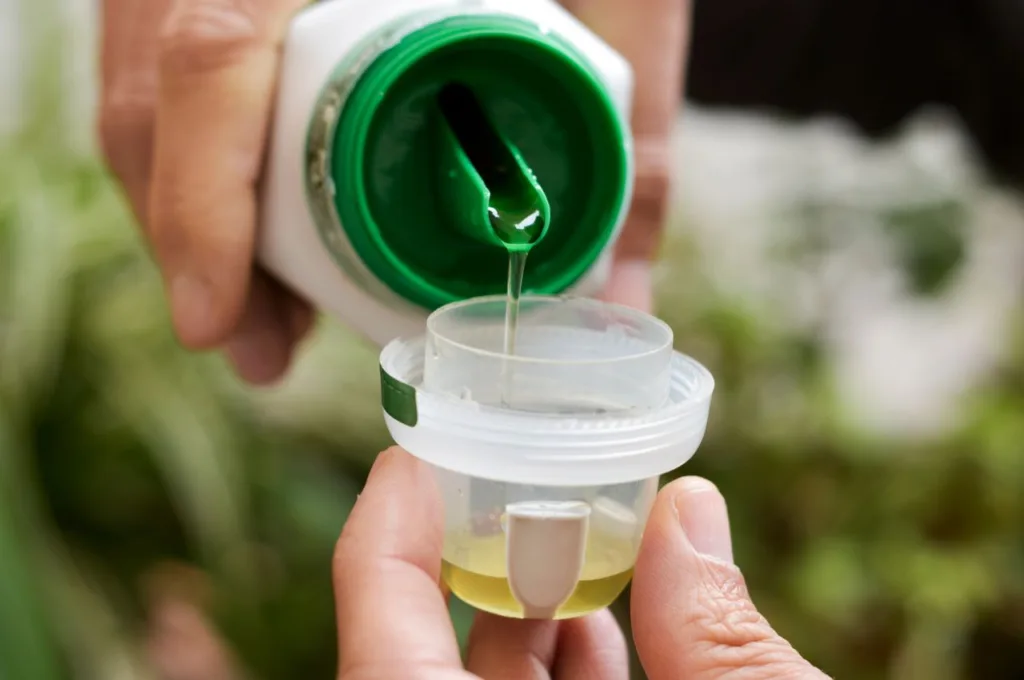
➗ N-P-K Ratio
If this information is available, check the nitrogen-phosphorus-potassium (N-P-K) ratio of the fertiliser you’re interested in buying. Most feeds for indoor plants have a nitrogen-heavy ratio, with a more balanced blend of phosphorous and potassium. However, this isn’t a guarantee, and certain plants may do best with a certain N-P-K ratio.
We don’t want to get into too much of a science lesson here, but our advice is to search your plant on Google to see if there’s an ideal N-P-K ratio based on the plant type. For example, “What’s the best N-P-K ratio for ferns?”
🗓 Frequency of Application
Be sure to consider how often you want to feed your indoor plants, and how this will affect your rate of fertiliser use. Most of the indoor feeds are designed for fertilising houseplants every 1-2 weeks, or with every water.
Choose a fertiliser that best aligns with your care routine, and make sure to follow application instructions carefully. You don’t want to over-fertilise your houseplants – too much nitrogen and other nutrients can actually hinder plant growth.

♻️ Organic vs. Synthetic
Another decision you have to make is whether you prefer organic or synthetic fertilisers for your indoor plants.
Organic options are gentler and support soil health, and have the benefit of being made from natural ingredients – although this can make them pretty smelly! Synthetic fertilisers provide quick and precise nutrient delivery, and because they’re synthetically made, their nutrient levels can be more carefully balanced. But they’re not all-natural, and you may only want to use natural, organic products in your home.
🚿 Ease of Use/Application Method
Next, consider the method and convenience of the houseplant fertiliser for application. Most the feeds we reviewed were a concentrated liquid formula or granules that needed to be diluted or dissolved in water, but we found this easy to do because they had instructions on the box (some had multiple sets of instructions depending on your use case).
If you want a really easy-use fertiliser for your houseplants, go for one with a measuring device in the lid itself, or avoid concentrated formulas altogether and go for slow-release fertiliser spikes that you simply stick in the soil beneath your plant.
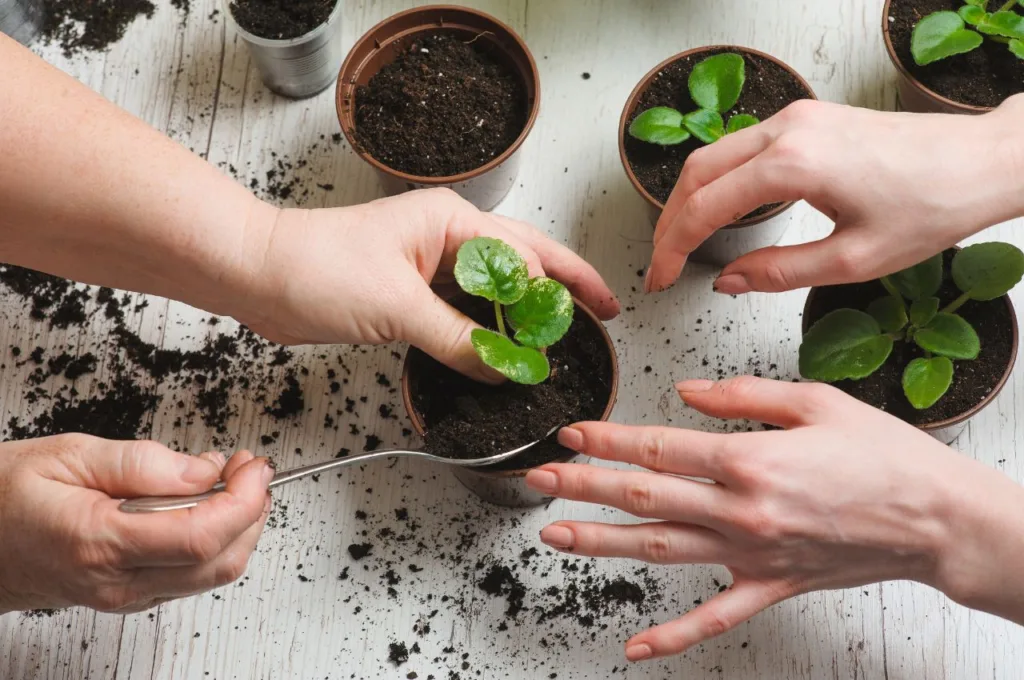
💰 Your Budget
While houseplant fertilisers are generally very affordable, it’s still best to set a budget if you plan to buy and use a plant feed in the long term.
You can generally expect to pay £4-£16 per bottle or box of indoor plant fertiliser, depending on the size of the product – and for most people, a single bottle lasts months on end. Your annual spend on houseplant fertiliser depends on the number of plants you have to feed and the value for money from your chosen product.
👷 Safety
Also be sure to keep safety in mind, especially if you have children or pets. Safety is particularly important for indoor plants because these are directly in your living space, and that’s where the fertiliser will be too.
Our recommendation is to look for fertilisers that are labeled as child- and pet-friendly, non-toxic, and safe for indoor use. If you’re not sure, it’s probably best to look elsewhere.
💎 Manufacturer Reputation & Customer Feedback
Finally, consider the manufacturer’s reputation and read customer feedback before you spend your money. Customer reviews offer valuable insights from real users who have firsthand experience with the product. They tell you how effective the fertilizer is in various situations, including for specific plant types or under different conditions.
Our tip is to look for before-and-after customer photos, since these show you exactly what you can expect from a fertiliser for plants like yours.
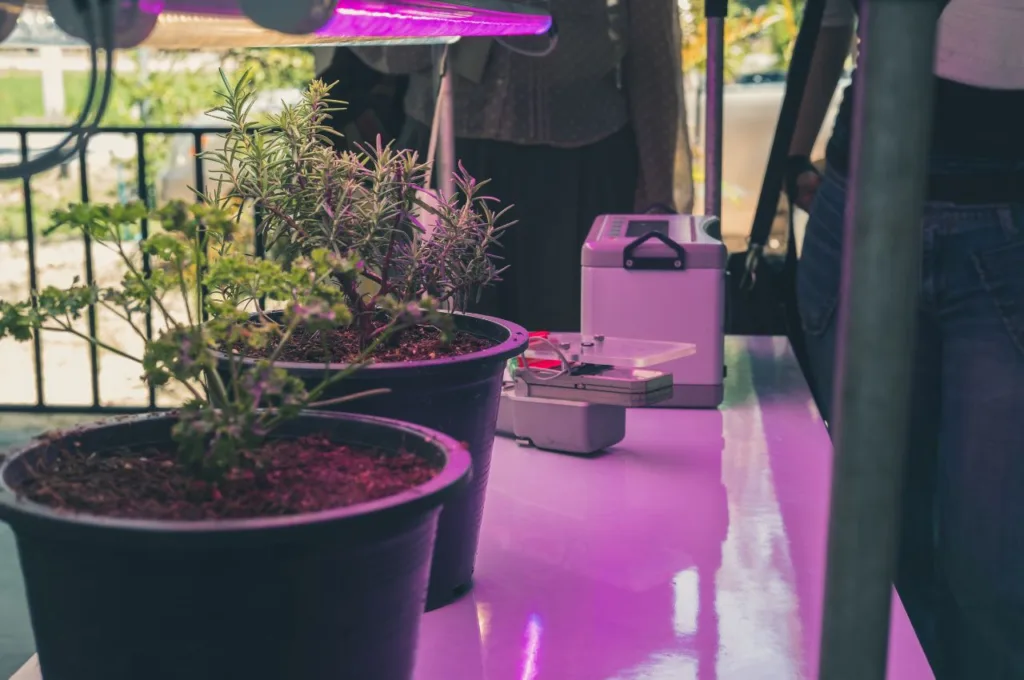
🏁 Final Word
We wrote this guide because we wanted to help houseplant enthusiasts like us find the best fertiliser to keep their indoor plants happy, support active growth, and improve soil quality, based on our own experience testing the products. Thanks for reading our reviews, and hopefully, you were able to find the best housplant food for your situation.
Important note: this review was last updated in December 2025. We apologise if pricing or availability has since changed for any of the products mentioned above.








